How Do Birds Mate? A Fascinating Exploration
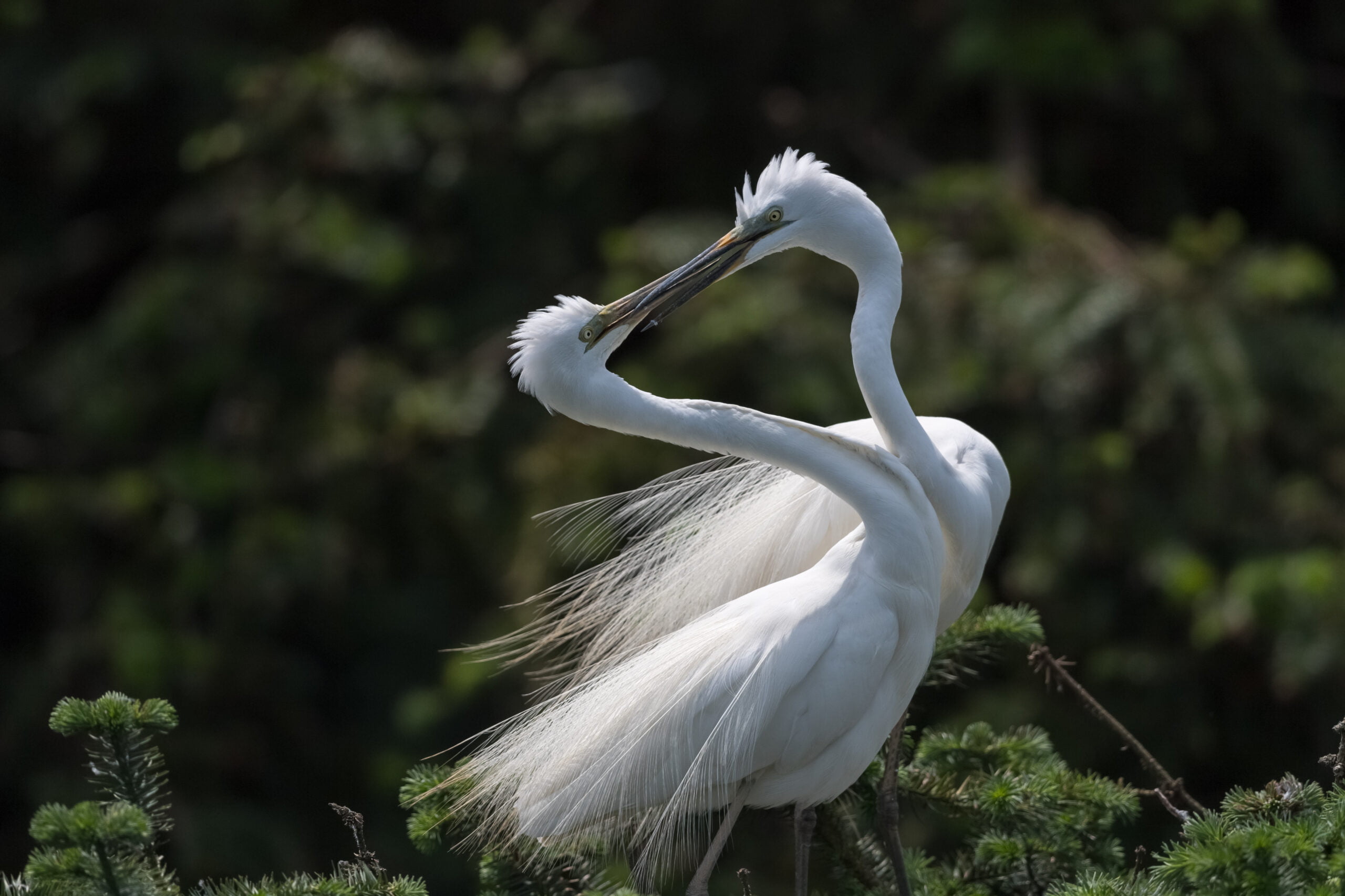
Birds have captivated humans for centuries with their colorful plumage, melodious songs, and intricate courtship rituals. Yet, one of the most fundamental aspects of their lives—their reproductive behavior—remains shrouded in mystery for many. How do birds, lacking the reproductive organs seen in mammals, manage to reproduce successfully? In this blog, we’ll delve into the fascinating world of bird reproduction, exploring everything from their unique mating processes to their diverse courtship rituals.
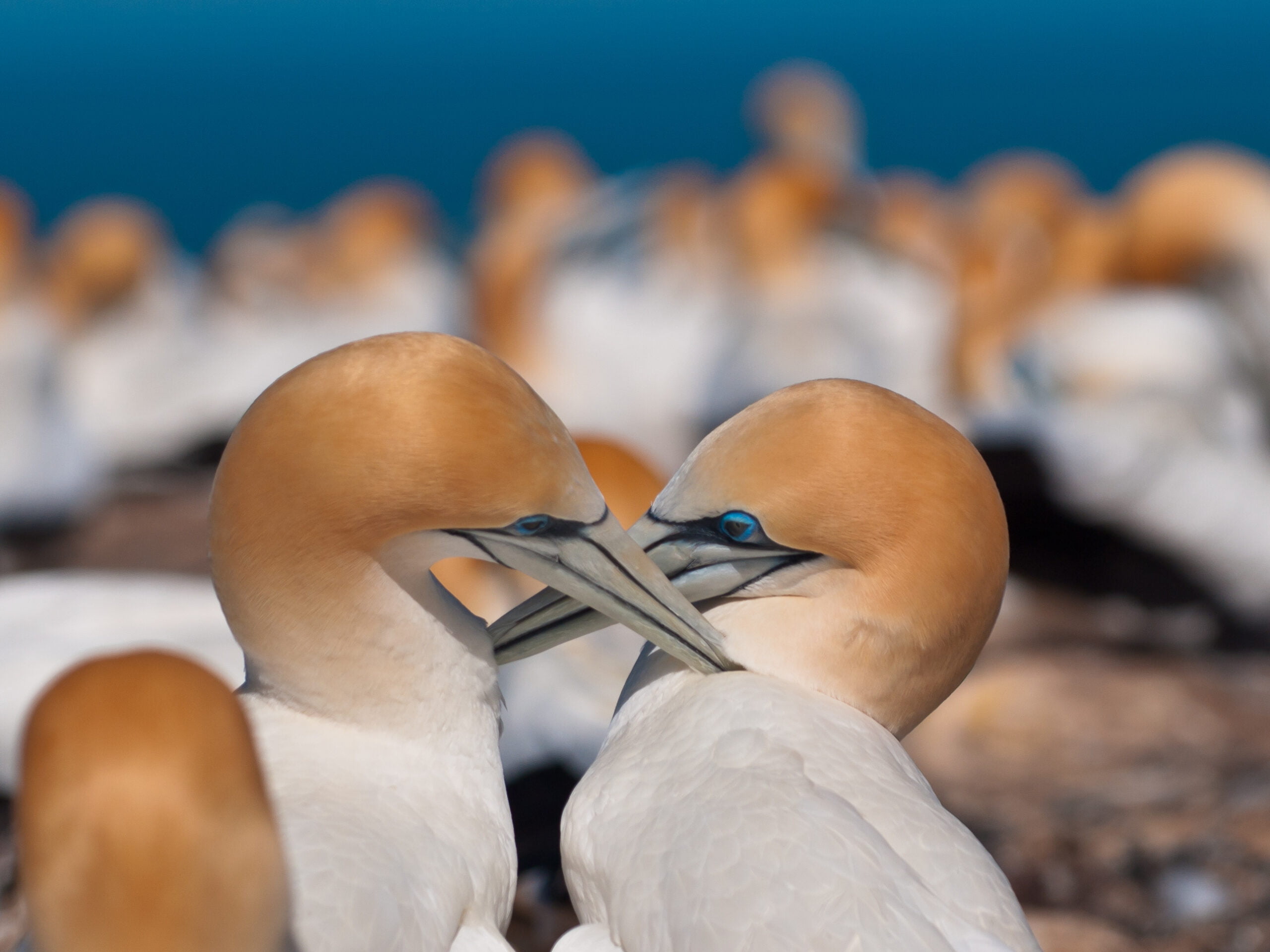
Courtship: An Elaborate Prelude to Mating
Bird courtship is a complex and often prolonged process that plays a crucial role in the success of reproduction. During the breeding season, which typically coincides with warmer temperatures, longer days, and increased food availability, birds engage in a variety of courtship displays designed to attract a mate. These displays are not just about physical attraction; they are also a test of a bird’s genetic fitness, health, and ability to provide for future offspring.
Visual Displays—One of the most striking aspects of bird courtship is the visual display. Many species, such as peacocks and birds of paradise, use vibrant plumage and elaborate dances to catch the eye of potential mates. These displays are not merely for show; they signal the male’s vitality and genetic fitness, making him a more desirable partner for reproduction.
Vocalizations—In addition to visual displays, birds also rely heavily on vocalizations during courtship. Songs and calls serve multiple purposes: they establish territory, deter rivals, and, most importantly, attract mates. Some species, like the lyrebird, take this a step further by mimicking environmental sounds to impress potential partners. The complexity and variety of these songs often correlate with the male’s reproductive success, as females are drawn to males who can produce the most intricate and varied calls.
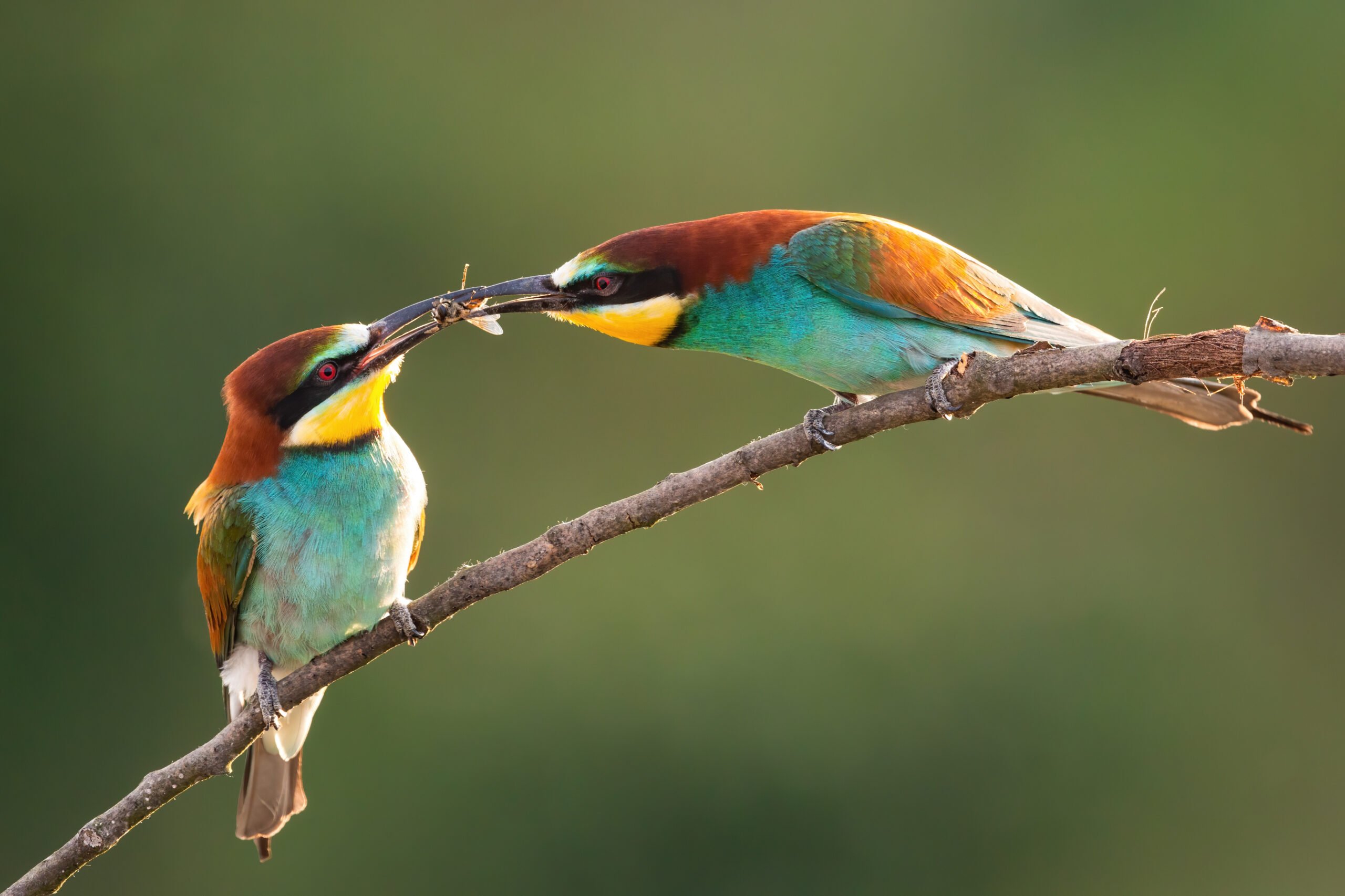
Two European bee-eaters courting in love on a branch.
Gift Giving—In some species, gift-giving plays a significant role in the courtship process. Males often present gifts to females as a way to demonstrate their ability to provide. These gifts can range from food offerings to carefully constructed nests. For example, male bowerbirds are known for their intricate nests decorated with colorful objects, which they use to entice females. This behavior not only shows the male’s resourcefulness but also his commitment to future offspring.
Choosing a Mate
Mate Selection Criteria—Selecting a mate is a critical decision for birds, as it directly impacts the survival of their offspring. Females often choose mates based on genetic fitness, which is indicated by physical traits like plumage color and song quality. Additionally, the availability of resources and the quality of the male’s territory can influence mate selection.
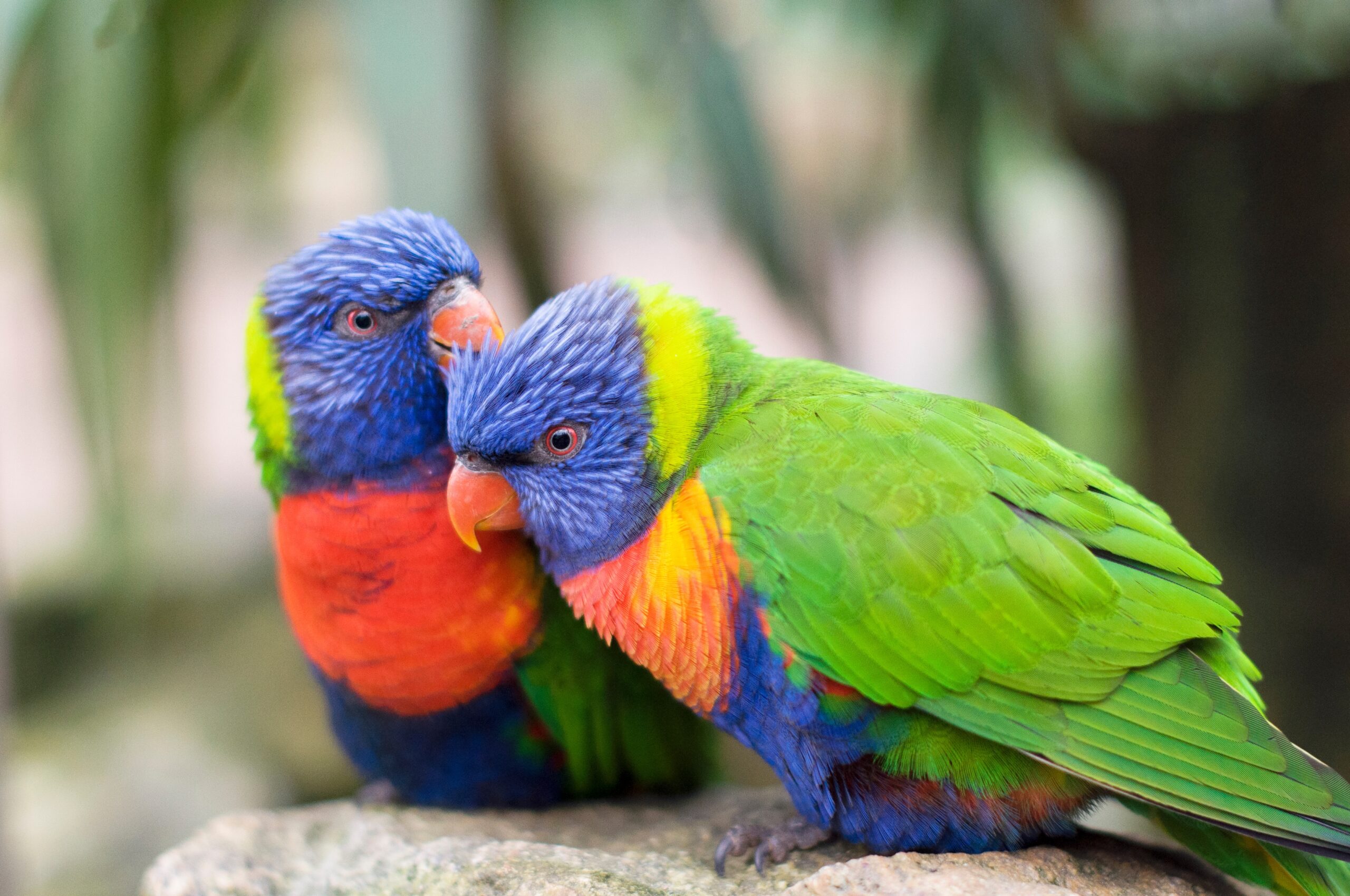
A couple of lorikeet parrots
So after the selection, will birds remain exclusive?
Monogamy vs. Polygamy—Birds exhibit a variety of mating systems, ranging from monogamy, where pairs form long-term bonds, to polygamy, where individuals mate with multiple partners. Monogamous species, like swans and eagles, often collaborate closely in raising their young. In contrast, polygamous species, such as the red-winged blackbird, may prioritize genetic diversity over pair bonding.
The Act of Mating: The Cloacal Kiss
Once courtship is successful, the actual mating process in birds is quite different from what is seen in mammals. Most birds do not have external reproductive organs like penises. Instead, both male and female birds have an opening called the cloaca, located at the base of their tail feathers. The cloaca is a multipurpose opening used for excretion as well as reproduction. During mating, the male and female birds align their cloacas in what is known as a “cloacal kiss.” This brief but essential contact allows sperm to transfer from the male to the female, enabling fertilization.
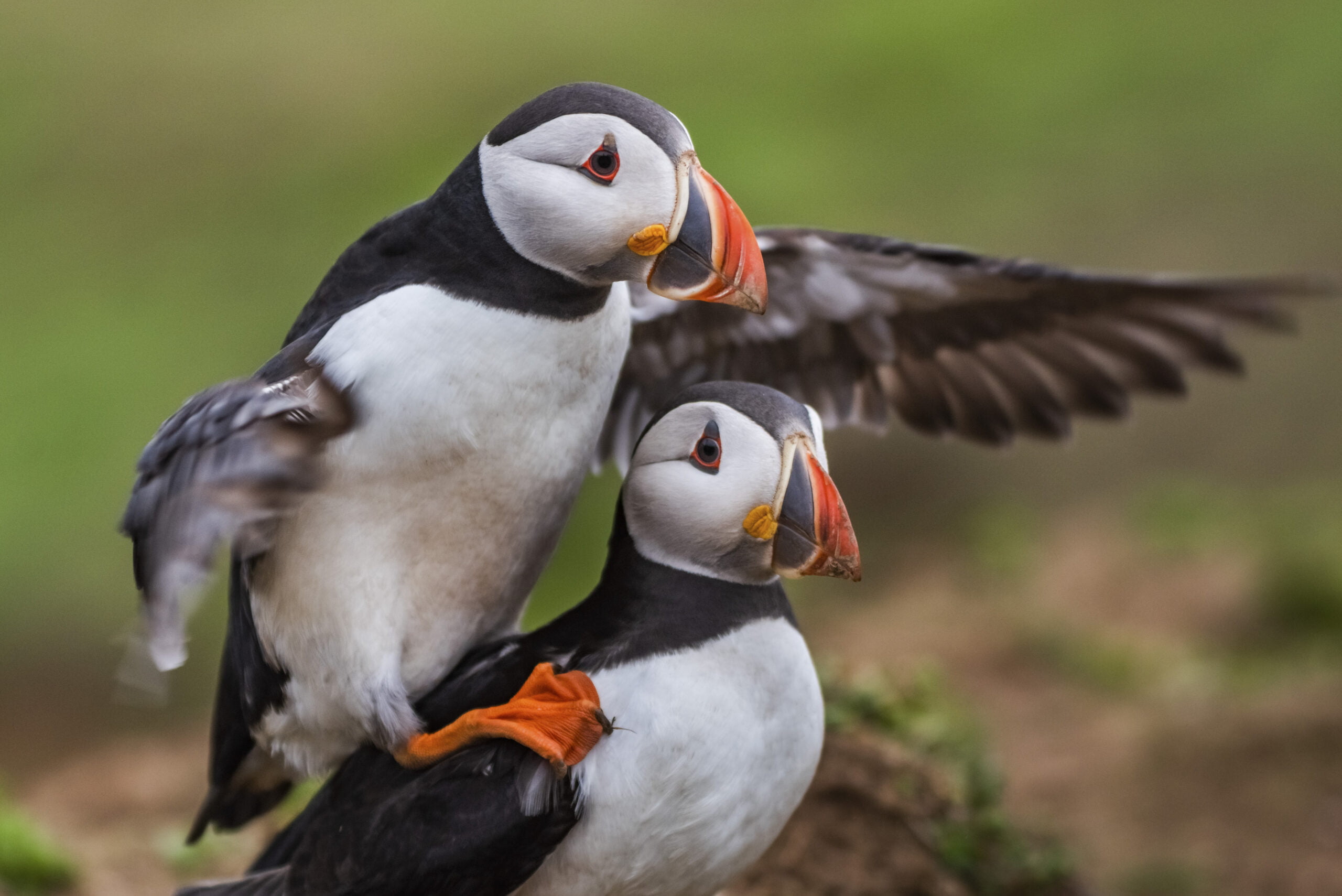
Cute puffins mating on Skomer Island, Pembrokeshire Coast National Park, Wales, United Kingdom
Despite its simplicity, this method is incredibly effective for most bird species. The cloacal kiss typically lasts less than a second, but maintaining balance during the act can be challenging, leading to multiple attempts to ensure successful insemination.
Here is another exception. Most waterfowl and ratites, such as ducks and swans, have penises. In fact, if they only had cloacae, the male’s weight would push the female’s cloaca below the water’s surface, and the current would quickly wash away any sperm that was hard to excrete. So they evolved a penis – an extension of the cloaca wall, in the shape of a spiral. The vagina of a female duck is also in the shape of a spiral, but it curls in the opposite direction of the penis.
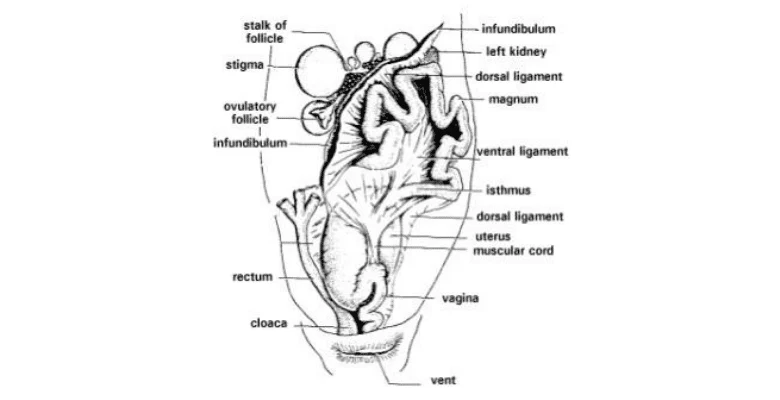
Avian reproductive system. Credit Susan E Orosz via Vetfolio
The sperm is delivered by lymph, not blood, and is guided to the female where fertilization takes place. The whole process is also a spark, ending in few seconds.
Raising the Next Generation
Nesting and Incubation—After successful mating, birds shift their focus to nesting and incubating their eggs. Nest building is a collaborative effort, with both partners contributing materials and labor. The purpose of the nest is to provide a safe environment for the eggs, protecting them from predators and harsh weather conditions. Once the nest is ready, the female will lay her eggs, and the parents take turns incubating them, keeping them warm until they hatch.

A male Cape weaver, Ploceus capensis, is building a nest.
Parental Care—Parental care in birds is a demanding yet vital responsibility. After the eggs hatch, both parents work tirelessly to feed and protect their chicks. This period of intense care and nurturing is critical for the survival of the young, as it prepares them for life in the wild. Parental care can vary significantly between species, with some bird parents remaining with their young until they are fully independent, while others may only stay until the chicks are ready to leave the nest.
Unique Mating Behaviors
Birds exhibit a variety of unique mating behaviors that further illustrate the diversity of avian reproduction.
Lekking—Lekking is a fascinating mating behavior observed in some bird species, where males gather in specific areas known as leks to display and compete for the attention of females. This communal display allows females to evaluate multiple potential mates at once, selecting the one that exhibits the most impressive traits. Lekking behavior is common in species such as the sage grouse and the greater prairie chicken.
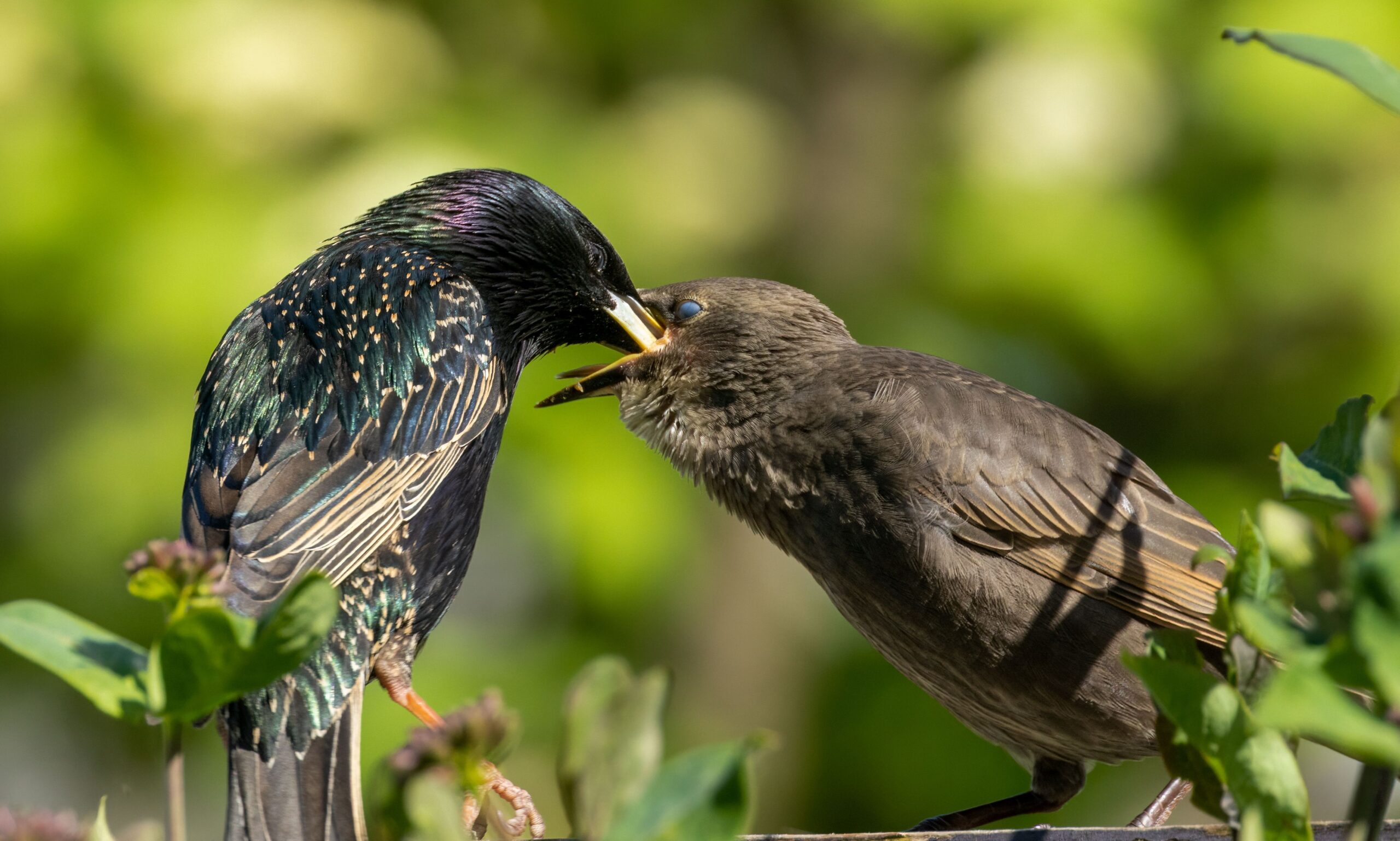
An adult starling feeding newly fledged baby
Cooperative Breeding—In some bird communities, cooperative breeding occurs, where additional individuals assist a breeding pair in raising their young. This support system can include siblings or unrelated birds, creating a network of care that enhances the survival rate of the offspring. Species like the Florida scrub-jay and the acorn woodpecker are known for their cooperative breeding habits.
A Little Tip
While bird mating might be fascinating to watch, if you happen to stumble upon the scene in your everyday life, remember to play the invisible spectator—stay quiet and keep out of sight.
Birds are super cautious during their brief mating moments, and even the slightest disturbance can ruin the whole event. If they sense you’re watching, they might abandon their carefully chosen spot and go nest-hunting elsewhere. And let’s be honest, you don’t want to miss out on having a charming, chirping family as neighbors, or the joy of watching little chicks grow up.So, let’s give each other a bit of privacy.
Respect is Protection.
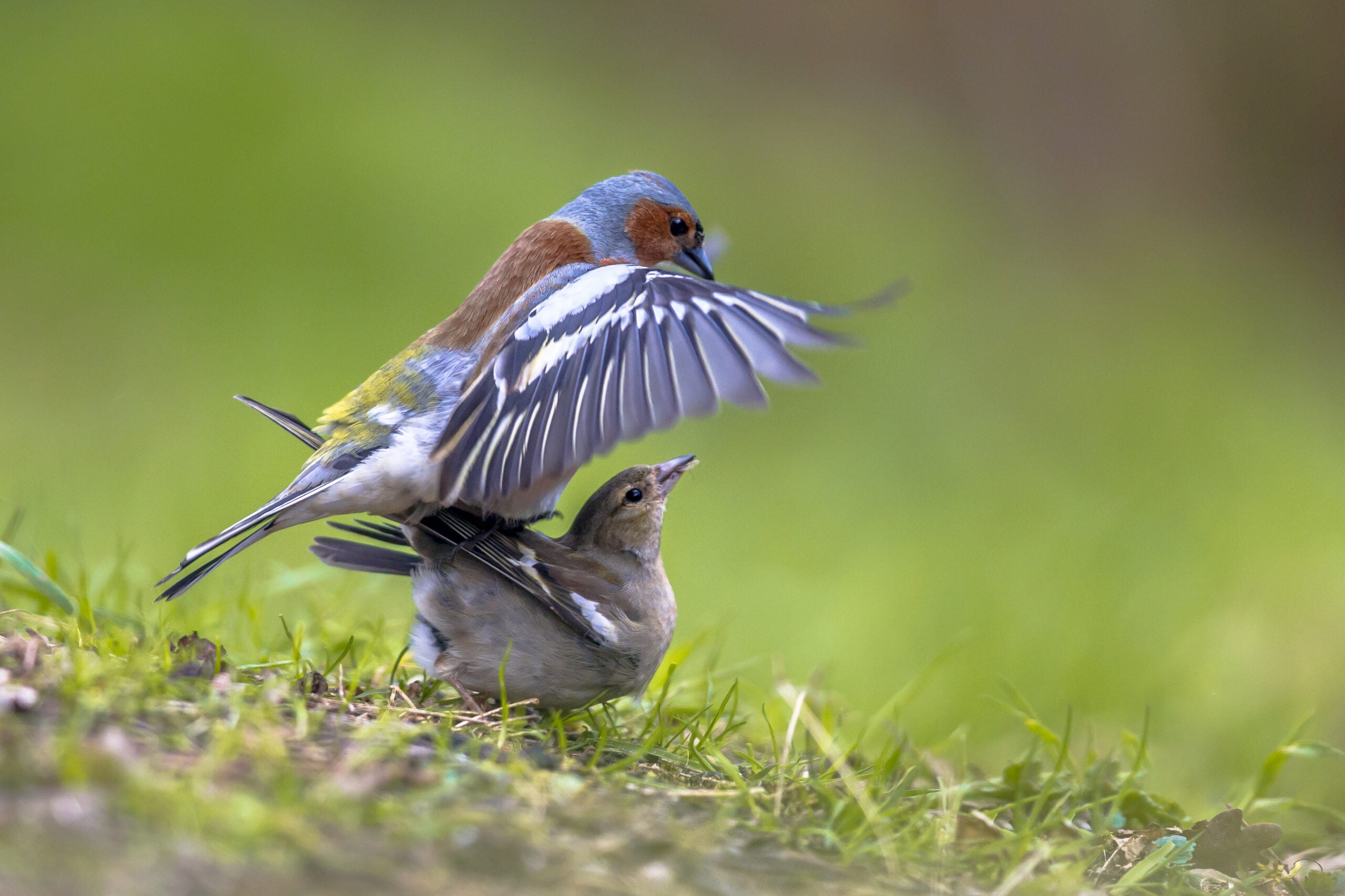
Couple of Common Chaffinch (Fringilla coelebs) mating on lawn in an ecological garden. Reproduction occurs in april and may when birds build a nest and defend their territory by singing their loud song.
Alright, that’s it for today’s article! If you enjoyed it, feel free to subscribe to our website, share it with friends and fellow bird lovers, and of course, we’d love to hear your thoughts, suggestions, or any questions you have.Thank you for reading, see you next time.
